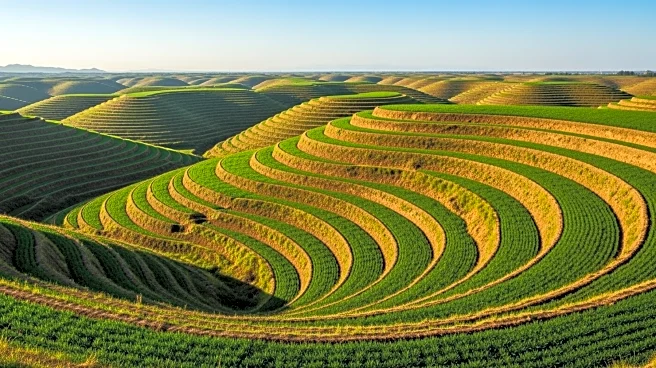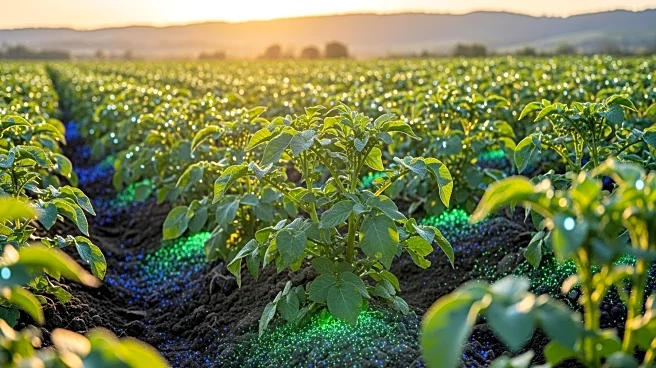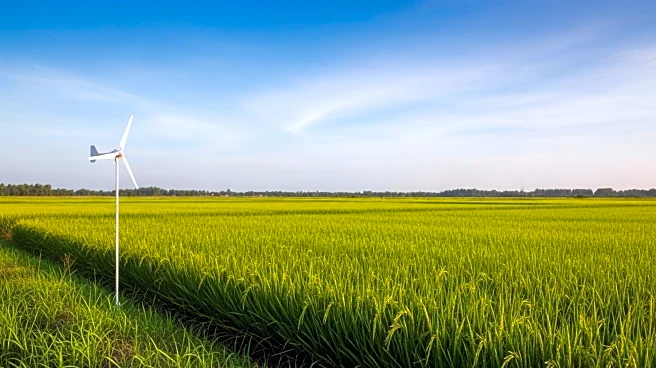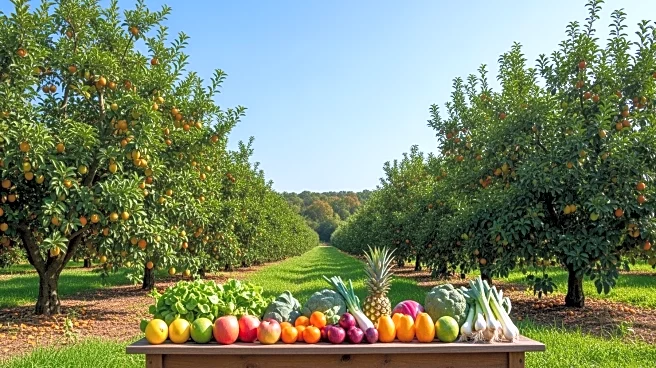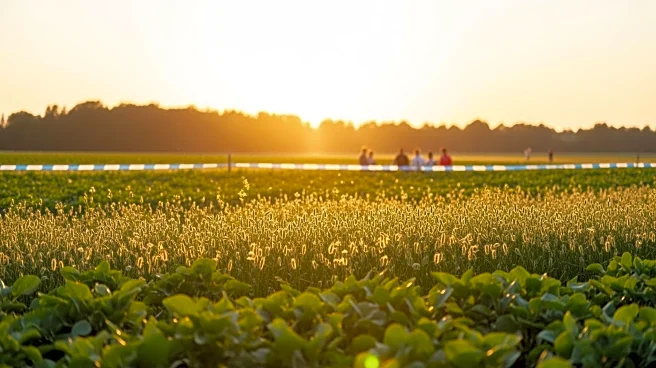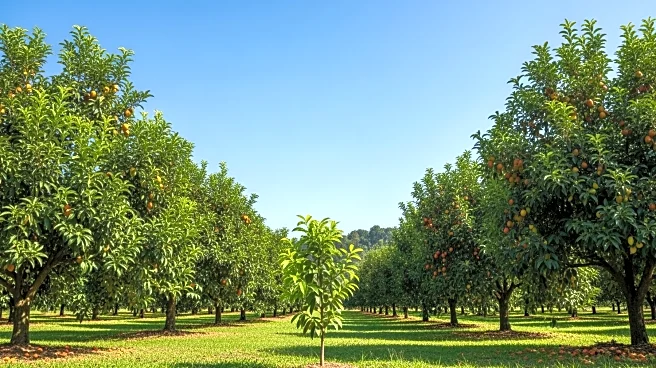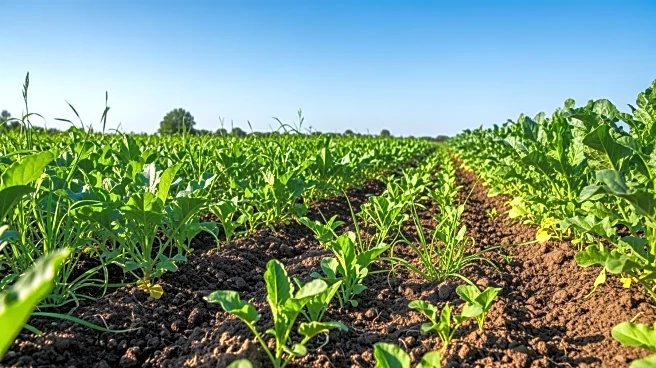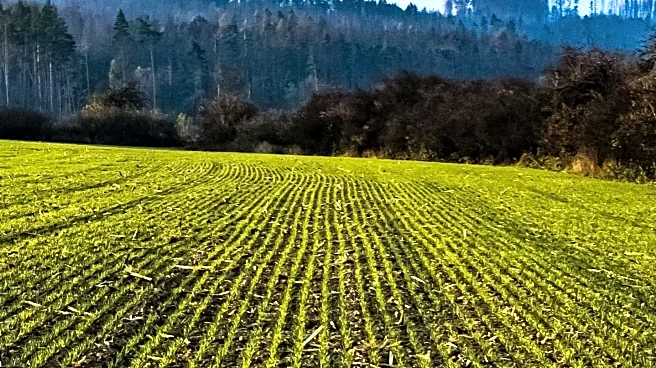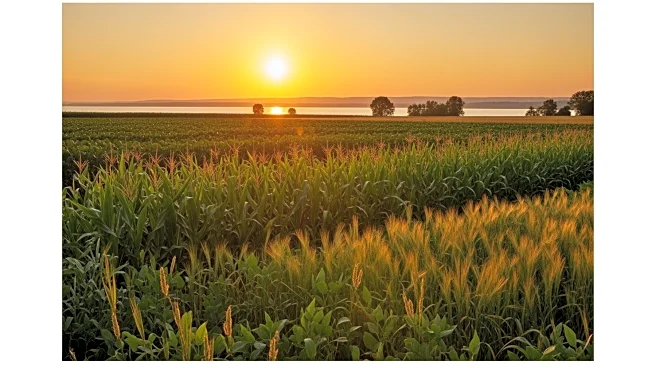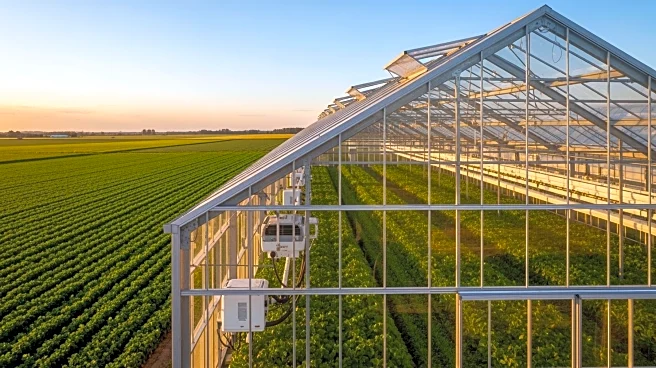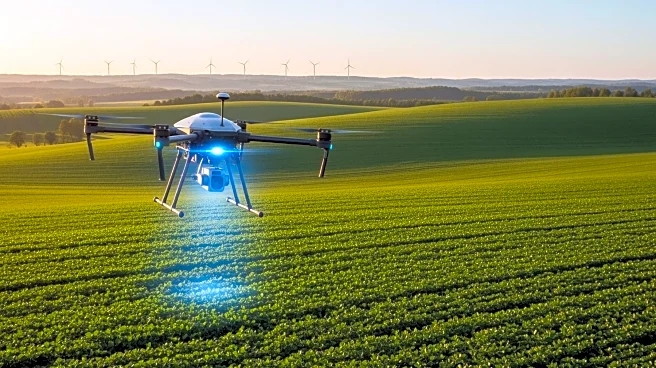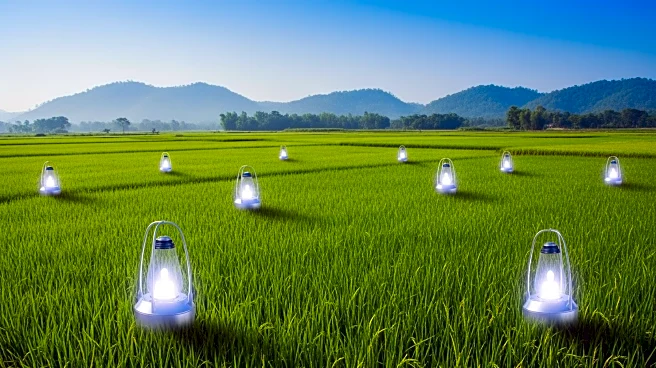What's Happening?
Recent research highlights the positive impact of terraced fields on soil organic carbon (SOC) content in the Loess Plateau. The study found that terraced fields exhibit higher soil moisture and SOC levels compared to sloping fields, creating a beneficial
cycle for carbon sequestration. The terraces enhance water retention, which supports plant growth and increases organic matter input into the soil. This process not only boosts SOC but also prevents erosion by protecting fine soil particles. However, the benefits diminish with soil depth, emphasizing the importance of managing terrace topsoil for local food production and carbon sink functions. Abandoned terraces show lower SOC levels due to reduced fertilization and increased erosion, highlighting the need for ecological restoration.
Why It's Important?
The findings underscore the role of terracing in sustainable agricultural development, particularly in semi-arid regions like the Loess Plateau. By increasing SOC, terraced fields contribute to carbon sequestration, which is crucial for mitigating climate change. The study also points to the challenges faced by abandoned terraces, where SOC levels decline due to lack of management and climate-induced erosion. This highlights the need for policies that support the maintenance and restoration of terraced fields to enhance their ecological benefits. The research provides valuable insights for land use strategies aimed at improving soil health and productivity while addressing environmental concerns.
What's Next?
Future research should focus on optimizing carbon storage in terraced systems while maintaining their economic viability. This includes expanding sampling frames and collecting comprehensive soil indicators to assess the impacts of terracing and abandonment on SOC dynamics. Practical guidelines for managing terraced fields could help maximize their ecological functions and support sustainable agriculture in the Loess Plateau region. Additionally, efforts to restore abandoned terraces should be prioritized to prevent further SOC loss and enhance biodiversity.
Beyond the Headlines
The study highlights the importance of vegetation type and planting patterns in influencing SOC dynamics. Afforested land shows higher SOC content due to increased organic matter input from forest litter. This suggests that reforestation and agroforestry systems could play a significant role in enhancing soil fertility and carbon sequestration. The research also points to the need for long-term ecological restoration of abandoned terraces to achieve substantial environmental benefits.
